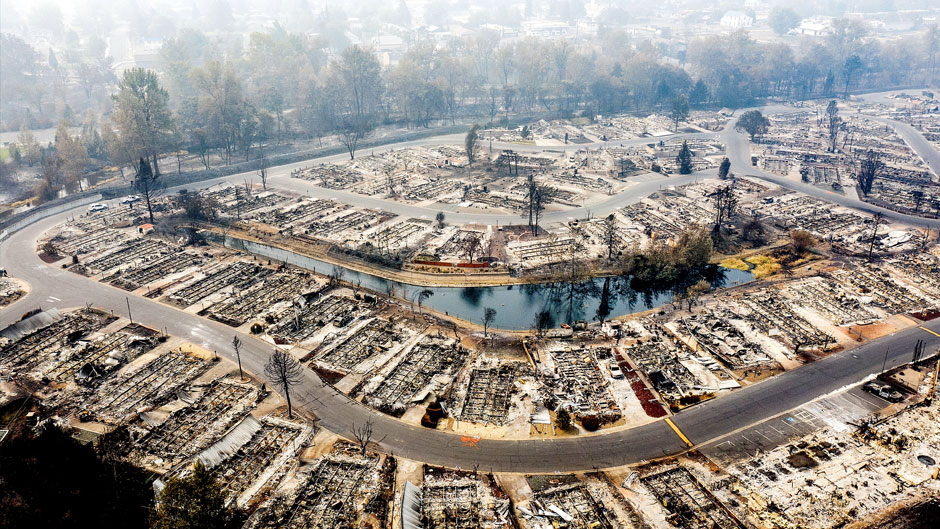Katharine Mach was only 9 when the Oakland Hills firestorm of 1991 killed 25 people and destroyed nearly 3,500 homes. But the University of Miami scientist, who was born and raised in California’s San Francisco Bay area, remembers the deadly blaze quite well.
“While we were safe and lived in an area where the fire risk was low, for thousands of other people, it was a time of unbelievable panic and trauma,” recalled Mach, an associate professor of marine ecosystems and society at the Rosenstiel School of Marine and Atmospheric Science. “We had friends who lost homes in that fire.”
With wildfires now scorching the West Coast, Mach, whose research focuses on climate change risks and the ways in which people respond and adapt to those risks, recently pondered the question of whether it is time to consider managed retreat—moving people and infrastructure out of harm’s way—as a defense against the destructive blazes that plague the West Coast and only seem to be getting worse.
The strategy is often associated with sea level rise. As water levels increasingly encroach on flood-prone areas along U.S. coastlines, some residents are electing to move to higher ground. The Federal Emergency Management Agency even has a program in which it purchases properties in flood-prone areas, converting the land to open space.
But applying managed retreat to fire country presents formidable challenges, according to Mach. “For one, we’re talking about an area with an immense population,” she said, referring to the U.S. wildland-urban interface (WUI), where developed and undeveloped land meet and where many of the deadliest fires start. “We can’t depopulate most of the American West. Retreat as an option will need to be used selectively.”
Yet, even with the increased risk of fire, more and more people are living in the WUI. From 1990 to 2010, the number of new houses in the area grew from 30.8 million to 43.4 million, while land area rose from 581,000 to 770,000 square kilometers, according to a March 2018 article in the Proceedings of the National Academy of Sciences.
“Just in terms of the numbers, for flooding or fire, we actually build faster and put more homes in places that are at risk of flooding and fire than we do elsewhere,” Mach said. “That’s because people love the water, and they love the beautiful wilderness right at the edge of where urban settlements meet up against the forest.”
Could building smarter be one strategy to saving more homes—and ultimately, lives—from raging fires?
“The landscape of the American West, especially in California, is different in some important ways compared to the Southeast. It’s a tinderbox with an increasingly long fire season, and a spark can send things to flames,” Mach said. “So there’s a big opportunity to be highly strategic about where new development goes, how to create defensible space, and how to harden homes. If your neighbor’s house is on fire, you’re much more at risk. But if the whole community has taken preventive measures, it’s at a much lower risk of fire.”
Still, even the best of preparations cannot always stop a conflagration, and “that’s why you have to be prepared to get people out and get them out fast,” Mach said. Doing so, however, presents its own set of unique challenges. “There are so many things that have to be factored in—from getting overnight warnings to people to evacuate to making sure road and transportation systems can handle an evacuation,” she explained.
“For a tornado, you might have minutes to get sheltered,” Mach stated. “For earthquakes, it’s when it’s happening or seconds before. But for fire, it’s somewhere between a tornado and a hurricane. You have more time but not necessarily that much more time.”

